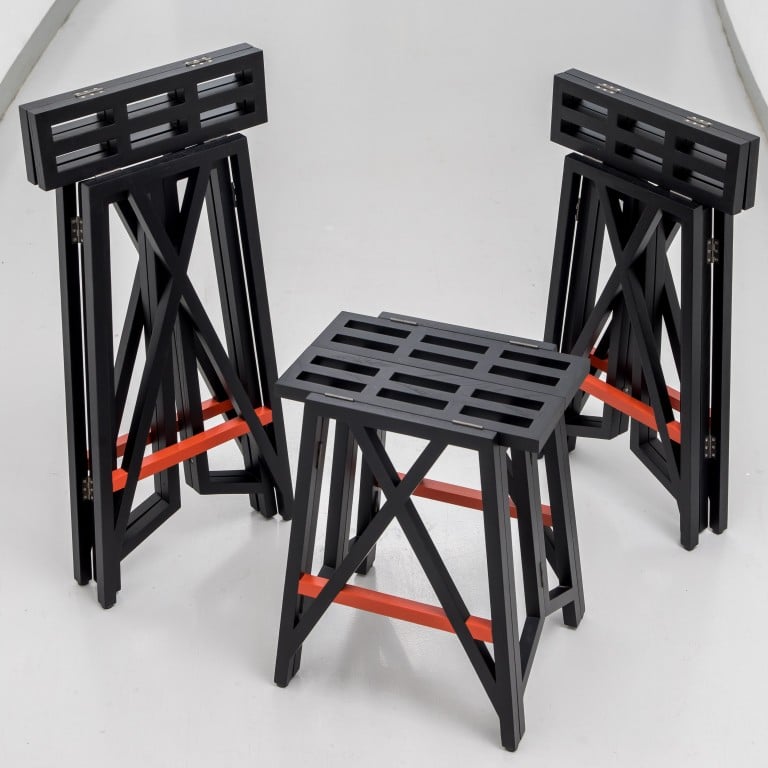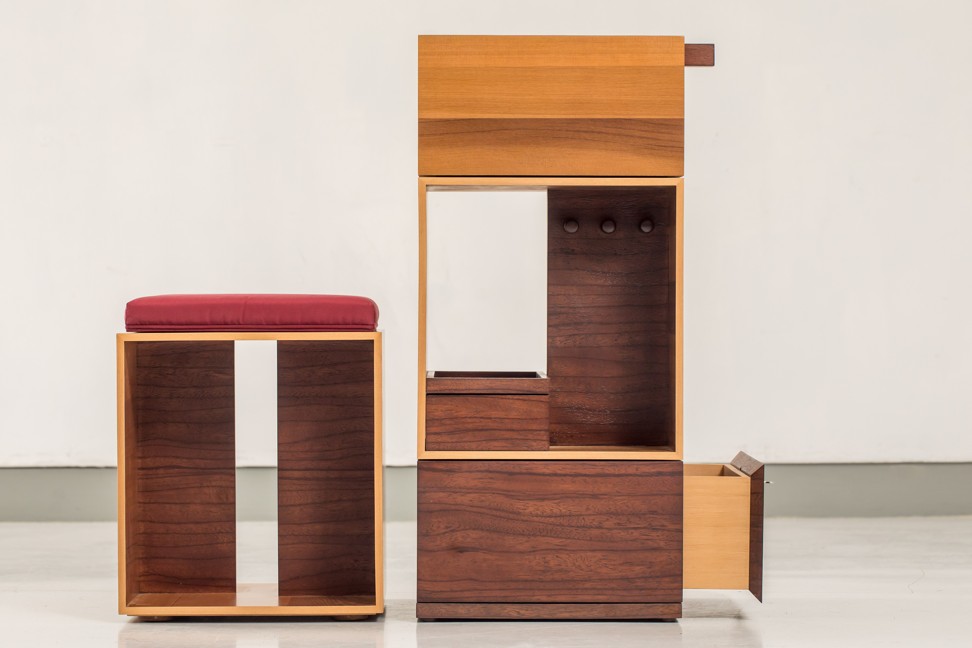
Look what we made: East-West furniture design project produces one-of-a-kind pieces
- British furniture designers teamed up with Hong Kong design professionals from a variety of disciplines to create unique furniture pieces
- Their designs, including a multifunctional chair, movable storage, and a Zen-influenced low table with pull-out seats, are unveiled in Hong Kong this week
Samuel Chan is a furniture designer with one foot in the West and the other in the East. Born in Hong Kong and educated in London – where Chan’s studio, Joined + Jointed, is based – he divides his time between projects in both regions.
That led him to wonder what would happen if creative people from East and West worked together as equals on something. That thought led to Project HK-UK, a collaboration between Hong Kong and British designers that produced six original furniture designs.
The pieces will be launched this week (December 5-7) at DesignInspire, an exhibition of design and innovation at the Hong Kong Convention and Exhibition Centre in Wan Chai.

While all the British participants are furniture designers, the Hong Kong designers work in a variety of disciplines: fashion, jewellery, automobile and typeface design, architecture, and visual communication. Why? “As designers, we can all get stuck in our own field and our own ways of thinking,” Chan says.
“We can become very technical, or focused on details that only we find interesting. When we bring in someone from another discipline, another culture and different experience, their input is completely fresh. They challenge the furniture designer to consider things that would not occur to us. But because that person is also a designer, they know about the design process and so the two sides have a natural and immediate understanding of each other.”


“I knew he could handle [Lo’s] level of detail,” he says.
Chan himself wanted to work with Chinese typeface designer Sammy Or “because we are very similar in what we try to do with design: we both want our work to be very clear, very clean”. Or’s typography for Hong Kong’s Mass Transit Railway (MTR) is still in use today.

The resulting pieces, all made in Joined + Jointed’s workshop, include a lightweight, portable folding stool that Griffiths imagined an architect could take out on site – handy for when you need to sit and do some sketches, he says, or simply to “take in” a greenfield site.
Freshwest worked out a structure of timber sections that evokes both Chinese typography and the ancient Celtic symbols of Wales. “We’re hooking into the Belt and Road,” Griffiths says, referring to China’s East-to-West infrastructure investment programme.
The stool comes in three sizes, which the architect describes as “dai pai dong height” (for sitting and slurping noodles), desk height, and bar height. “It’s a very versatile design,” he says.


Lo – jewellery designer, cultural historian and author (her memoir, Designing a Life, was published in September 2019) – had the idea for a small, movable piece of furniture that incorporates jewellery storage, a dressing mirror and stool. Lockable to securely hold a person’s precious belongings, it can easily be moved around the house, she explains.
Lo drew inspiration from a Jin dynasty painting of a noblewoman’s toiletries, held in the British Museum, and interpreted it in a contemporary way.
Careful consideration was given to the choice of materials. Cedar – whose fragrance adds another sensory layer – is combined with rosewood, a material traditionally used in fine Chinese furniture. Drawers are lined with red silk.

She says she and Ho “instantly hit it off”, sharing an interest in strong, sculptural forms and exploring adaptability.
The chair features recycled nylon fabric on the cushions and, for added cosiness, a poncho inside the headrest.
In the design, two low seats face each other, and slide into the body of the table when not in use. Spaces at each end store trays, cups and brushes.



Wong thinks design and creativity should apply to daily life. He designed this piece with a view to placing it in his second home in Kyoto, Japan, where he and his wife could use it together.
As to whether any of the Project HK-UK designs will go into production, “we will see what happens after Milan”, says Chan.
“But the six pieces are very strong. I am very proud of them, and I think there is potential,” he adds.
DesignInspire takes place Dec 5-7 at the Hong Kong Convention and Exhibition Centre. Visit designinspire.com.hk

